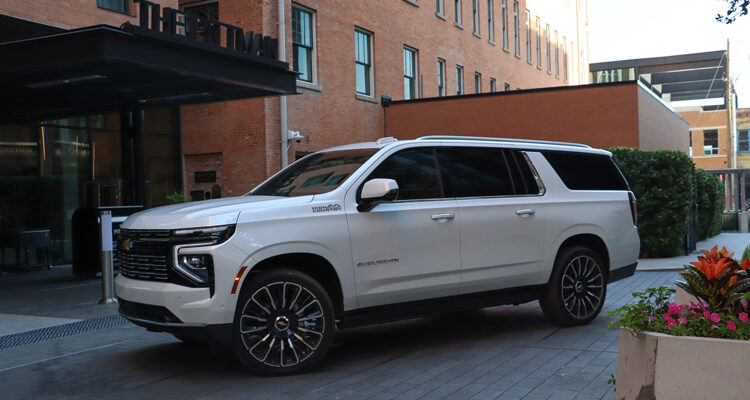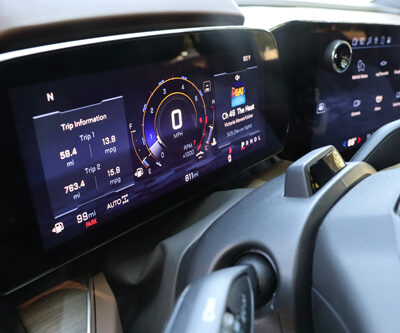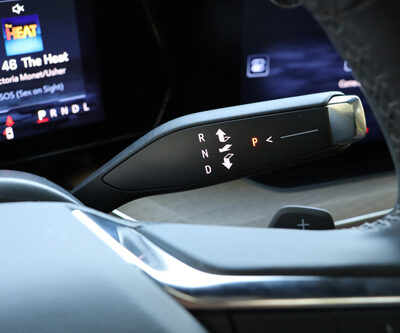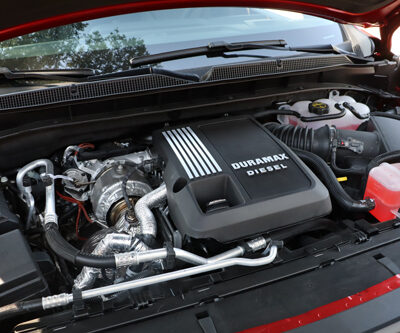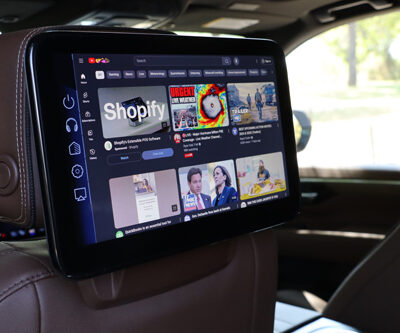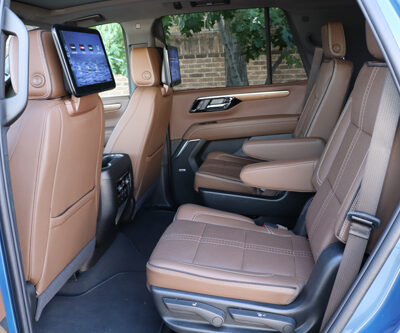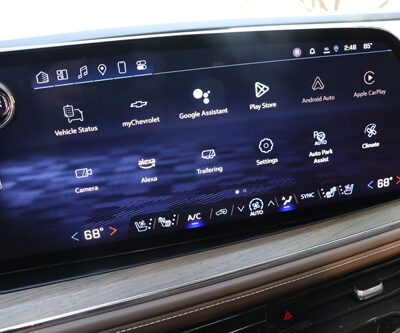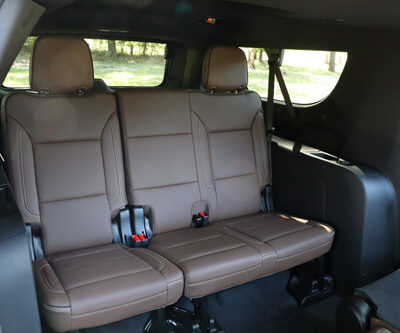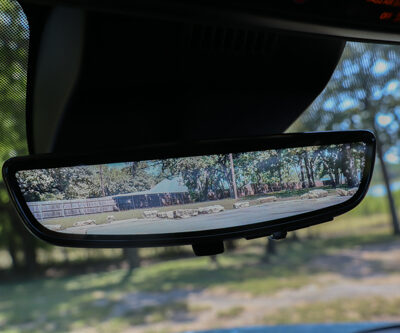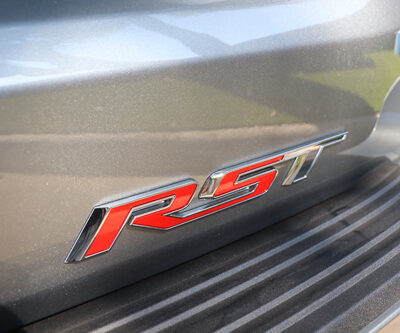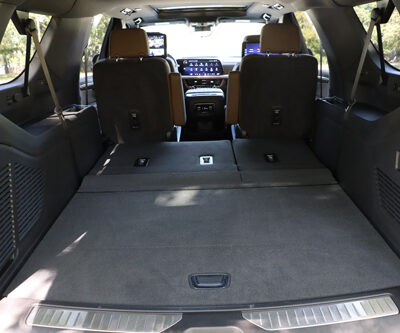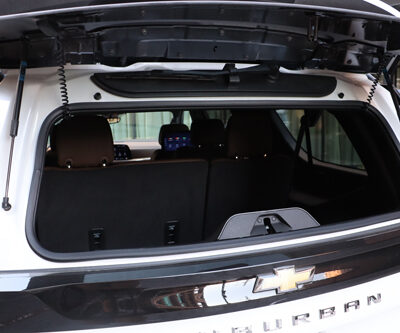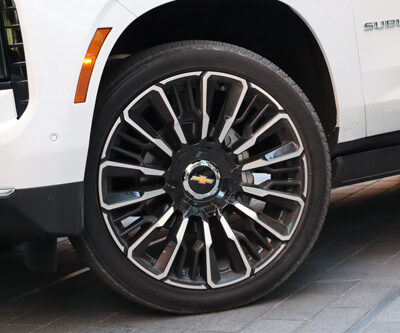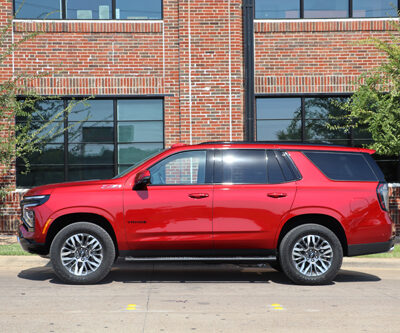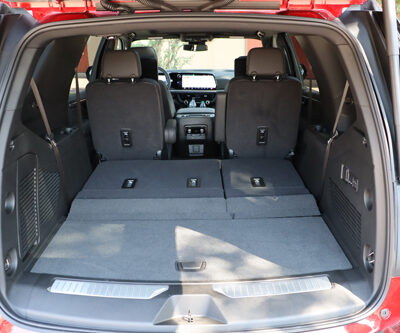Dallas, TX – Don’t look now, but the Chevrolet Suburban has the longest-running nameplate in the car and light truck world. It’s been doing it since 1935, and to celebrate it’s 90th – ninetieth! – anniversary, Chevrolet is giving it some new tech, some new looks and better engine variety. The same goes for the Suburban’s stubby (well not all that stubby) Tahoe twin, a vehicle that’s not been around for as long, but is one of the leaders in the North American full-size SUV space. We took a trip to Dallas-Fort Worth – about 30 km where every Suburban and Tahoe is built in Arlington, TX – to see how these two stack up.
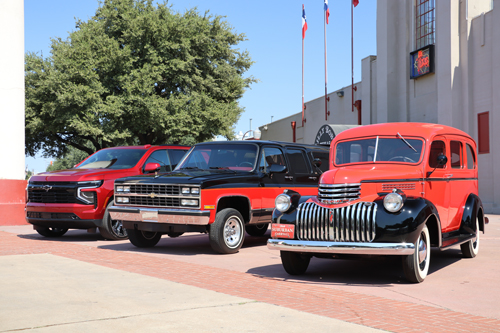
If we’re honest, one of the toughest vehicles to design in a unique manner are full-size SUVs. They are traditionally crafted from the two-box shape you used to use while doodling car chases in class and they have certain practicality requirements that are best answered by keeping things boxy. So what to do, then to stand out from the crowd?
Well, for ’25, Chevrolet has turned to an area where even SUV designers get the most freedom – the details. Take the wheel design choices, for example; there are a bunch of new flavours across the boards for these two, measuring from 18- to 24-inches, the largest wheels we’ve ever seen on either a Suburban or Tahoe. These rollers really do look the business, especially when wrapped in the low-profile rubber the RST performance models get.
If tall sidewalls are the order of the day – the taller they are, the better the ride, and the better for off-roading – then the Z71 model may be your cup of tea. It gets chunky Goodyear Wrangler rubber wrapped ‘round unique 20” wheels, a special front bumper equipped with tow hooks for better approach and departure angles and for the first time, the option to opt for diesel power, courtesy of a 3.0-litre six-cylinder Duramax turbodiesel good for 305 horsepower and 495 pound-feet of torque, both increases of about 30 over last year’s diesel that the Z71 didn’t even get.
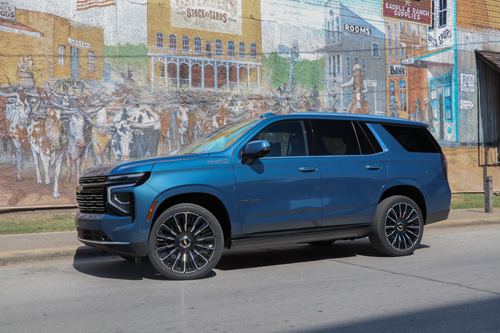
You like torque but maybe not that telltale diesel rattle (which, in all honestly, has been greatly reduced here; this is one smooth oil burner)? Well, there are also two V8s to choose from: a 5.3L that is standard on the base LS trim good for 355 hp and 383 lb-ft and a 6.2L unit that bumps the power figures to 420 hp and 460 lb-ft. If the diesel is smooth then that 6.2L is like a hot knife through butter; the way it works in concert with the 10-speed automatic transmission that every truck gets is a lesson in how to develop a powertrain for a rig like this. If towing is priority number 1, however, it’s actually not the diesel you want to opt for in either truck – you’re better off with the 5.3L V8 which offers the best tow capacity in either 2WD or 4WD for; 4WD, by the way is standard on everything but the LS and LT models.
Standard on all models, meanwhile, is the largest touchscreen infotainment display available in the segment. Measuring 17.7”, it is your direct link to Google Built-In tech, which offers Google Maps, Assistant and the ability to login to your own Google account for calendar access and so on. The larger screen means they no longer had room for last year’s push button transmission, which has been swapped for a column-mounted shifter for ‘25. In true tablet-form, each icon can be dragged and dropped anywhere on the display including a tray at the top that allows the pinning of your most used apps. If Android Auto and Apple CarPlay are more your game, then you can activate those apps wirelessly as well. It’s all very good; the one thing I would ask for is a few more speakers. As it stands right now, a six-speaker set-up comes as standard, with an optional 10-speaker Bose system as well. That’s fine, but that’s not a huge speaker count, especially when you consider just how big these are, especially the Suburban.
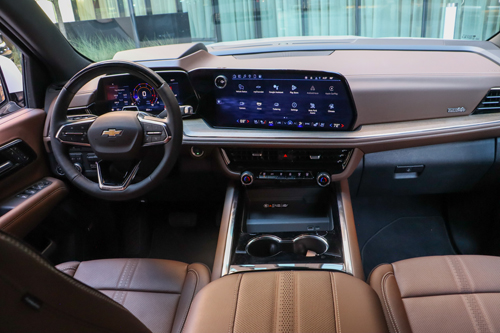
It is a big ‘un, this Chevy, providing ample leg- and headroom even for those seated in the third row. The second row slides fore and aft for even more legroom and it also tumbles forward for easier third row access. Since it doesn’t tilt as it slides, though, accessing the third row with car seats installed is made more difficult. Adding to the second row experience however, is a power-sliding front centre console. By pressing a roof mounted button atop the windscreen, you can move the centre armrest rearwards so second row passengers get extra cupholders, and front seat passengers get extra storage. Win-win, but weird that you have to reach an area normally reserved for sunroof controls to operate it and second row passengers can’t operate it at all.
Speaking of interior space: both the Tahoe and Suburban can seat up to nine people (with the optional front row bench seat) and have the same cabin space for occupants; it’s the cargo room that improves in the larger truck, going from 3,480 L in the Tahoe to 4,097 L in the Suburban. That’s great, but considering that it costs and additional $3,500 to move from the Tahoe to the Suburban no matter the trim and all that’s added is more cargo space, a cynic might say that you’re paying about $5 per litre, and that’s all. Loading either truck is made easier thanks to the dual tailgate that allows you to open the entire door or just the glass. A completely handsfree tailgate that uses proximity sensors to open is new for ’25.
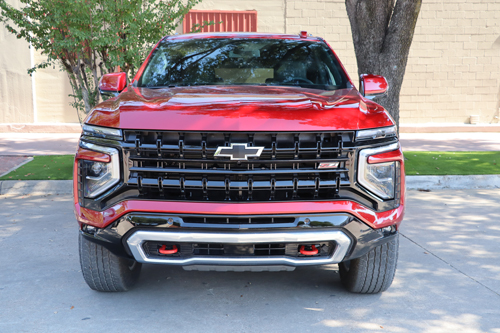
The tech story could end there, but it does not. That’s because there’s more availability of Chevrolet’s Super Cruise autonomous tech across the range. It’s optional on every trim save for LS or Z71, and along with Tesla’s Autopilot it remains the best autonomous tech on the market. Unlike Autopilot, or Volvo’s LIDAR tech, Super Cruise is geo-fenced meaning it works only on certain roads, about 1,000,000 miles of which are mapped in Canada and the US. So, while you can’t use it on all roads (who would want to use auto driving on bendy mountain road is beyond me), on roads it’s meant to operate it works very well. It will keep speed, maintain distance, automatically pull out of the lane to pass and if it senses faster traffic is coming up on your six, build in a little extra space. It’s great for covering long distances on the highway as Super Cruise does make you feel more relaxed on long drives. Super Cruise and the comfortable seats and roomy interior, of course.
Yes; even with optional self-levelling air suspension and adaptive dampers you will feel the body-on-frame truck underpinnings over larger bumps (especially when riding on 24s). No one is arguing that these are performance trucks (even in RST form) with razor-sharp steering, but the elements that really matter for a full-size SUV experience are all present and accounted for: spaciousness, interior tech, torquey powertrain choices and that classic chrome n’ muscle style everyone loves from their full-size SUV.



